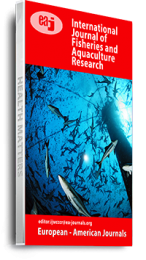This study investigates the skeletal Biomineralization of two sympatric typical sparid fish species, Sarpa salpa (herbivorous) and Dentex gibbosus (benthic carnivore), from the southern Mediterranean coast of Libya, to elucidate how ecological niches and feeding strategies influence skeletal adaptations. Morphometric analyses revealed significant differences between the species: S. salpa exhibited greater total length (TL), total weight (TW), and dry bone weight (DBW), with positive allometric growth (b = 3.32), indicating disproportionate skeletal reinforcement for hydrodynamic efficiency. In contrast, D. gibbosus displayed negative allometry (b = 1.82), prioritizing skeletal efficiency relative to body length, consistent with its benthic ambush predation. The DBW/TW ratio was lower in S. salpa (1.99%) compared to D. gibbosus (5.37%), reflecting higher muscle mass in the former for sustained swimming and a heavier skeleton in the latter for mechanical support during substrate interaction. X-ray fluorescence spectroscopy identified calcium (Ca) and phosphorus (P) as the primary skeletal components in both species, with S. salpa showing significantly higher P and manganese (Mn) levels, suggesting faster bone turnover or metabolic demands linked to active locomotion. D. gibbosus bones contained trace iron (Fe) and silicon (Si), likely acquired from benthic foraging. Calcium content (mostly as carbonate) increased with fish length in both species, underscoring its role in skeletal growth. Correlation analyses revealed strong Ca-P associations and negative Ca-S relationships, highlighting mineral interplay in biomineralization. The findings demonstrate that skeletal biomineralization in these species is shaped by their divergent ecological roles: S. salpa’s lightweight, stiff skeleton supports midwater agility, while D. gibbosus’s robust skeleton facilitates benthic stability and predation. These adaptations underscore the functional link between biomineralization, trophic ecology, locomotion, muscle mass, and protection and concealment strategies in marine vertebrates.
Keywords: Dentex gibbosus, Sarpa salpa, biomineralization, morphological adaptations, skeletal adaptations

